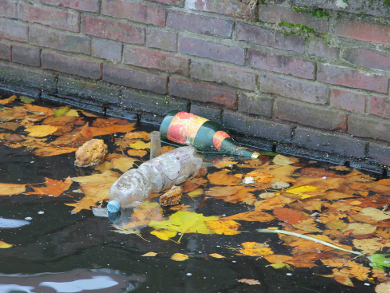A new method uses polymer nanoparticles to trap and remove organic pollutants from soil and water. Protective shells keep the nanoparticles separated in water, but ultraviolet light causes them to lose their shells and clump together so that they can be recovered, carrying adsorbed pollutants with them.
Robert Langer, Massachusetts Institute of Technology (MIT), Cambridge, MA, USA, and colleagues found that the hydrophobic poly(lactic acid) ends of the polymer chains attract organic pollutants to the interiors of the particles. The hydrophilic poly(ethylene glycol) chain ends face outward and stabilize the particles in a colloidal suspension. The researchers tested this approach on laboratory wastewater, thermal printing paper, and contaminated soil. They tried to remove dye compounds, endocrine disruptors, biopersistent compounds, and pharmaceuticals. A single extraction, using less than 1 % (w/v) of the nanoparticles, removed 5 % to 100 % of the pollutants.
Preliminary experiments with zebrafish embryos suggest that the combination of adsorption onto nanoparticles and UV photodegradation can reduce the cancer-causing tendencies of bisphenol A, triclosan, and 17α-ethinyl estradiol without generating obviously toxic byproducts.
- Nanoparticles with photoinduced precipitation for the extraction of pollutants from water and soil,
Ferdinand Brandl, Nicolas Bertrand, Eliana Martins Lima, Robert Langer,
Nature Commun. 2015.
DOI: 10.1038/ncomms8765




